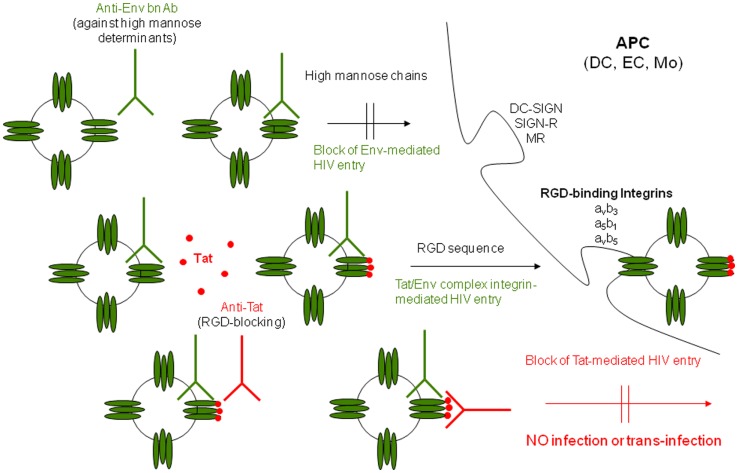Figure 3.
Outcome of DC infection in the absence or presence of Tat, anti-Env, and/or anti-Tat antibodies. Tat redirects HIV to RGD-binding integrins evading neutralization by anti-Env Abs and both anti-Env and anti-Tat Abs are required to block infection. Extracellular Tat released by infected neighbor cells binds to trimeric Env on HIV, decreasing recognition of C-type lectin receptors and promoting engagement of RGD-binding integrins, which are expressed by inflammatory DCs, macrophages, and endothelial cells (ECs) present at the site of infection. As a result, virions escape neutralization by anti-Env Abs directed against high mannose determinants and enters target cells upon binding to RGD-binding integrins. Anti-Tat Abs neutralize this binding, preventing virus entry through RGD-binding integrins. DC-SIGN: dendritic cell-specific intercellular adhesion molecule-3-grabbing non-integrin; SIGN-R: homolog of DC-SIGN present on ECs; MR: mannose receptor [modified from Ref. (68)].

